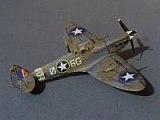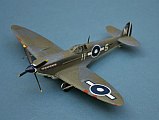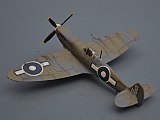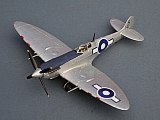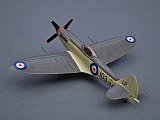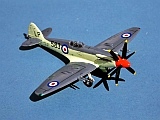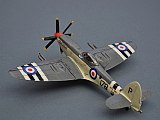When it first entered service, the concept of a Sea-
However, by 1941, the success of the Sea Hurricane and the changing needs of the Mediterranean campaign in particular, made the Spitfire's adoption at sea an inevitable evolution. After a slightly shaky start, during which concerns over the robustness of the airframe proved largely correct, Seafires settled down to become one of the leading British naval fighters of WW2, saw active service in Korea and continued to be used by the RN and RNVR, until the mid 1950s.
Merlin Engined Variants
Seafire Mk1 The first Seafires were relatively simple conversions of ex-
Italeri Spitfire Vb (Trop). Scratch-
The exact identity of this aircraft is not clear, but it was photographed at Gibraltar in 1943 whilst being repaired.
Another converted Italeri Spitfire Vb. Markings from the Aeromaster FAA Part 1 Set.
Lt Cdr Duncan Hamilton RN flew this unusually painted aircraft as his personal mount, whilst based at Port Reitz Air Station, Mombassa, Kenya in 1943. Cannons have been removed.
Seafire MkII The Seafire Mk. IIc was actually the first Seafire variant to be taken
on charge by the Fleet Air Arm, entering service days before the first Seafire Mk.
Ibs. The Mark II introduced the Spitfire "C" Wing, which allowed it to be fitted
with up to 4 x 20mm cannon. In recognition of the different operating conditions
at sea, a low altitude version, the L.IIc variant, was fitted with the Merlin 32
engine and a 4 blade propeller. All were new aircraft, with production shared between
Supermarine and Westland. Provision was made for rocket assisted take-
Airfix Spitfire Vc converted with strengthening plates, radio hatch, hook & spools
In November 1942, during Operation TORCH, the Allied invasion of North Africa, SLt
J D Buchanan claimed an Armee d'l Air Douglas DB7 over Algiers Bay whilst flying
this machine. National markings on RN Aircraft participating in this operation were
temporarily over-
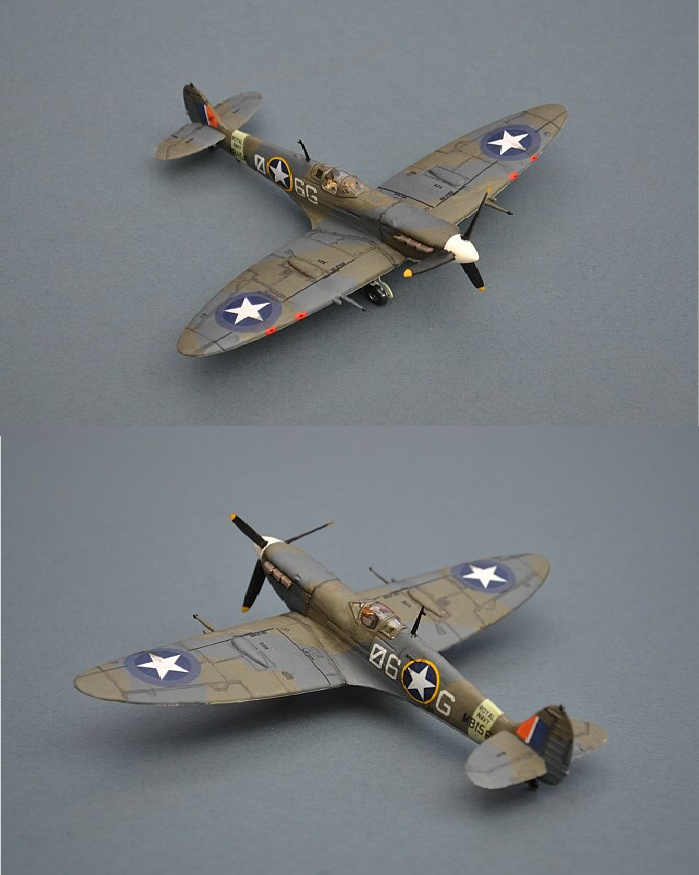
Airfix Seafire IIc from the 2009 Club Limited edition set
September 1943 saw the first significant Allied landings in Mainland Europe, at Salerno in Italy. Operation Avalanche was supported by a significant Fleet Air Arm force, including Seafires. The aircraft performed well in the air, but around 60% of the force suffered significant landing damage, with the Seafire's known fragility exacerbated by calm conditions limiting wind over the decks.
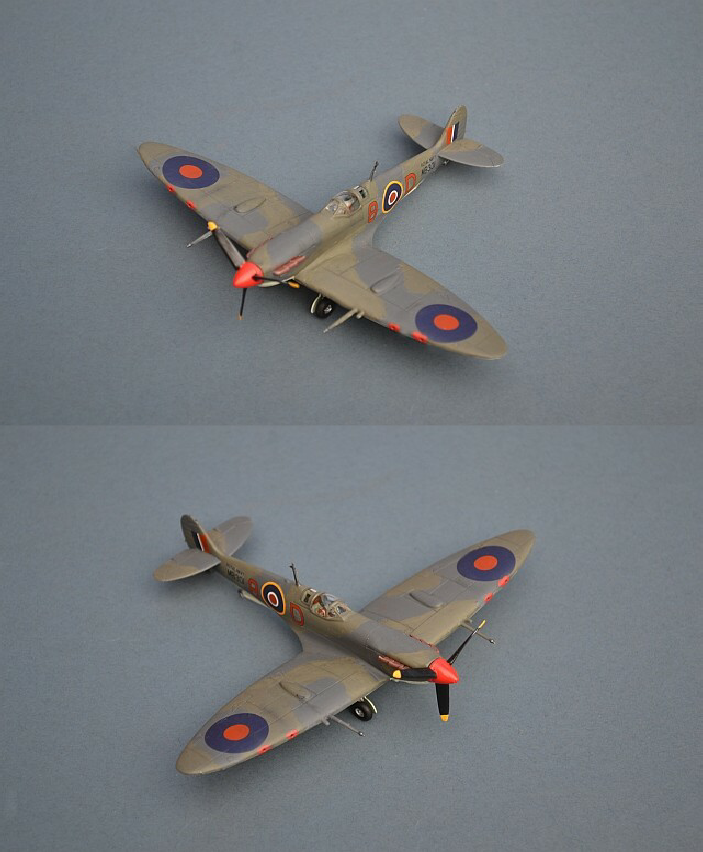
Seafire Mk.III The defintive Merlin-
Airfix Spitfire Mk IX, with Freightdog decals, hook, strengtheners, single radiator and slipper tank
This particular aircraft, flown by the 24th Wing's CO, Lt Cdr "Buster" Hallet RN,
DSC & Bar, was one of several stripped and polished up at the end of the war. There
is apparently some doubt as to whether the anti-
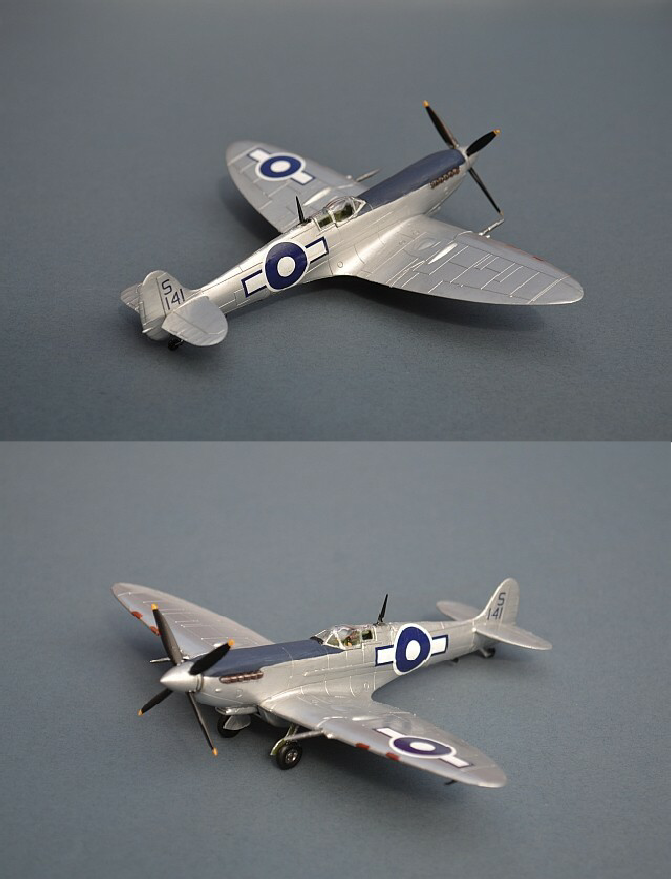
Heller Spitfire XVI with built up after deck, Academy canopy, wing extensions, single radiator and more (built using the spare bits left over from the Seafire 17 below).
SLt G J "Spud" Murphy destroyed 2 A6M5s Zeroes during a raid over Odaki Bay, Japan on 15 Aug 1945 in this aircraft. On returning to INDEFATIGABLE, the pilots learned that a cease fire was to take effect from 0700 the following morning and that 6 long years of war was finally over.
The engagement, by Seafires of 887 and 894 Sqns, escorting Avengers of 820 Sqn, was the final British aerial victory of WW2 and resulted in 8 confirmed kills, 3 probables and 4 damaged. Just as the first confirmed victory of the war had fallen to the Fleet Air Arm, so had the last.
Griffon Engined Variants
Seafire XV With the introduction of the Griffon engined Seafire, the type nomenclature
was changed to fit in with the equivalent Spitfire sequence, thus the next Seafire
variant became the XV. With production again shared between Westland and Cunliffe-
Converted Academy Spitfire XIV with Freightdog Models markings. Engine cowling shortened, hook/wheel guard added, 4 blade prop.
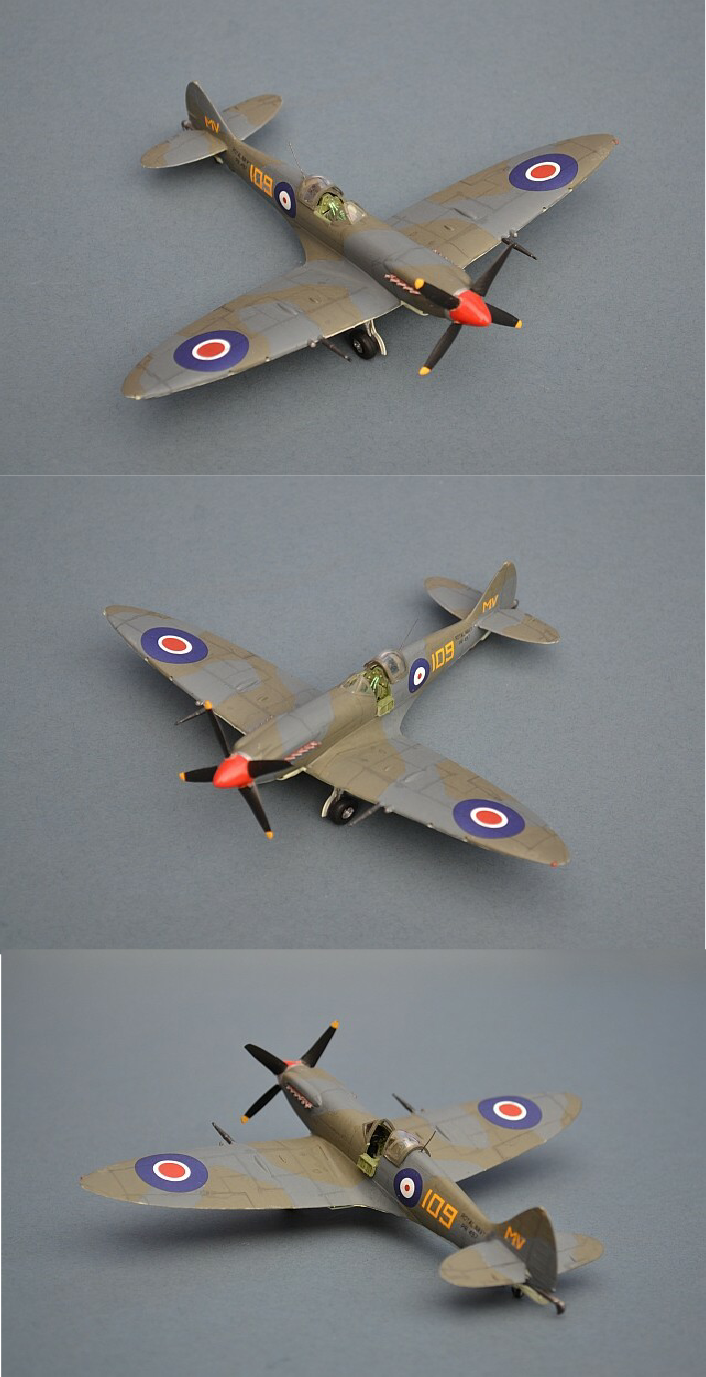
Seafire XVII / F.17 The first post-
Academy Spitfire XIV with cut down deck and "sting" hook, canopy from the Heller XVI.
Although not the final Seafire variant to enter service, the Griffon powered Mk17 was the last to leave service, remaining with RNVR Squadrons until the end of 1954. This particular aircraft was built by Westland, along with all but 20 of the total 232 production.
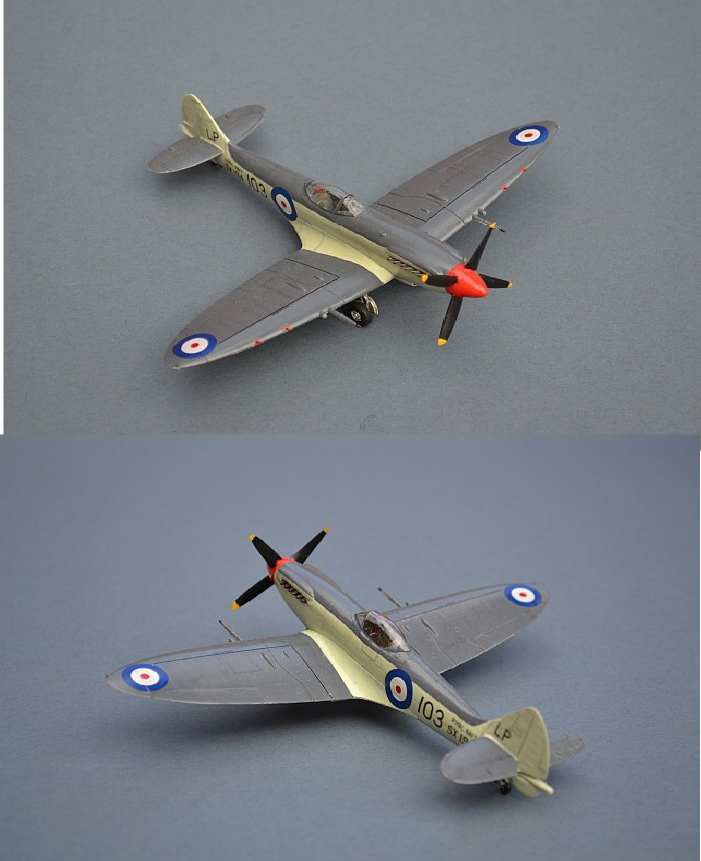
... and the real thing, in the air once more at Yeovilton in 2009.
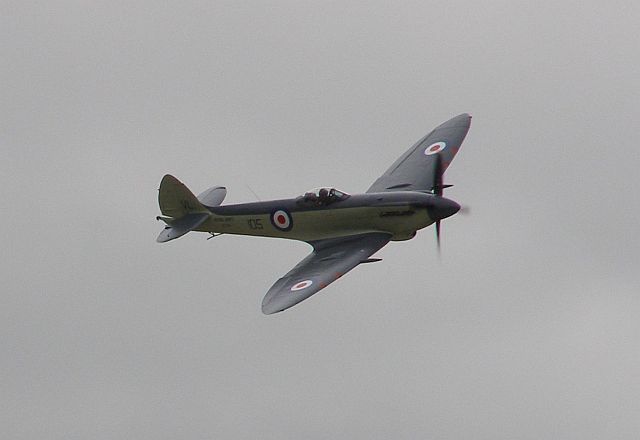
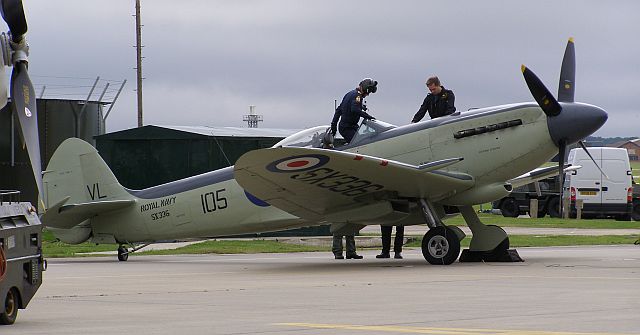
Seafire 45/46/47 The Seafire 45, 46 and 47 were the last of the Sea-
The 46 was based on the Spitfire 22, again with minimal modification but re-
The ultimate Seafire, was the 47, similar in most respects to the 46 except for powered folding wings, a longer supercharger intake and various aerodynamic improvements. 90 aircraft of this mark were built, seeing active combat service in Malaya and Korea with 800 Sqn.
Seafire F45 -
The Seafire 45 was the naval equivalent of the Spitfire 21, initially fitted with
a 5 blade airscrew and then the first trial fits of a contra-
CMR Resin kit
Seafire FR.47 800 Sqn Fleet Air Arm, Task Force 57, HMS TRIUMPH, UN Forces, Incheon, Korea 1950
The final Seafire variant to enter service was the Seafire 47. Essentially a fully navalised Seafire 46, it shared much in common with the Spitfire 24, but with fully folding wings. Seafire 47s served in Malaya and Korea, attacking ground targets and flying fighter sweeps. Seafire 47s left front line service in 1951, superceded by the Supermarine Attacker. They continued in second line service with the RNVR until 1952, when they were replaced by Hawker Sea Furies.
Ventura short run kit
In this final form, the Seafire 47 was the last of the Spitfire family to go to war, with HMS TRIUMPH's Seafire Squadron playing a key part in the first year of the Korean War, especially the Inchon Landings of September 1950.
However, Korea was to become a key turning point in the history of aviation, as the
battle hardened, propeller driven Seafires, Fireflies, Furies, Corsairs, Yaks, Lavochkins,
Mustangs and Bearcats, finally gave way to the new generation of jet-
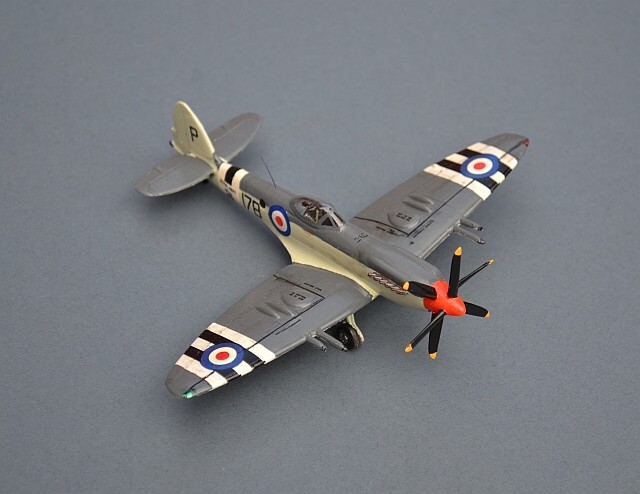
Royal Navy and Commonwealth forces had already been operating around Korea since the end of June, with Seafire (800 Sqn) and Firefly (827 Sqn) aircraft from HMS TRIUMPH participating in the first UN Carrier Strikes (along with aircraft from the USS VALLEY FORGE) on 3 July 1950. After several months of busy action in support of the beleagured UN Forces trapped within the Pusan perimeter, TRIUMPH's Seafires and Fireflies then participated in Operation Chromite, the successful Inchon Landings, on 13 Sep 1950.
At the end of the first day's action at Inchon, General MacArthur, commanding UN Forces, signalled to the Royal Navy's Admiral Andrewes, Commander Task Force 91, "My heartiest felicitations on the splendid conduct of the Fleet units under your command. They have added another glamorous page to the long and brilliant histories of the Navies of the British Commonwealth."
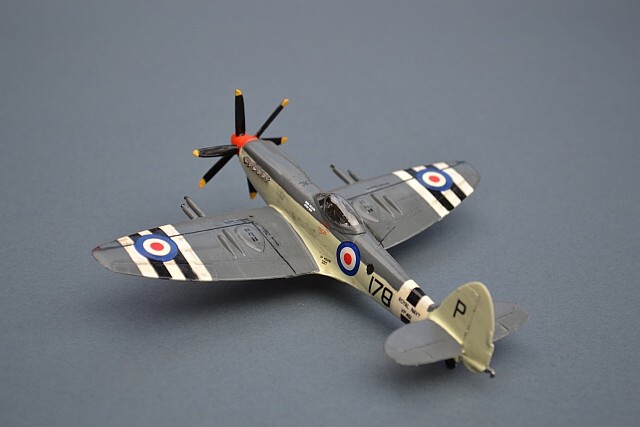
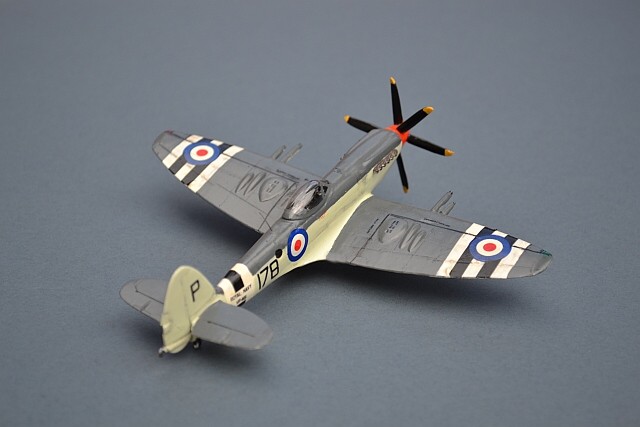
AZ Models Spiteful with modifications. Not really a Seafire, but almost. The planned main production variant of the Seafang would have been the Mk.32 with contrarotating props and folding wings, but to enable early entry into service, the initial Mk.31 was a basic version, essentially a Spiteful with a hook.
The Seafang and Spiteful were the last gasp of the Spitfire line. By 1943 it was
evident that the Spitfire airframe had reached its physical limits, so Supermarine
began work on an advanced wing to allow far higher speeds. The laminar flow wing
was thinner, with a sharper leading edge and with its thickest part further aft.
By allowing the air to flow around the wing with less turbulence, drag would be reduced
and the top speed of the aircraft would increase. At the same time, the overall shape
and construction of the wing were simplified, overcoming a long lasting production
limitation of Mitchell's original Spitfire wing design. A new fuselage was also designed,
with a lower nose overcoming the visibility issues that the longer Griffon had brought,
and a large tail unit restored the longitudinal stability lost with the more powerful
engine and the bubble-
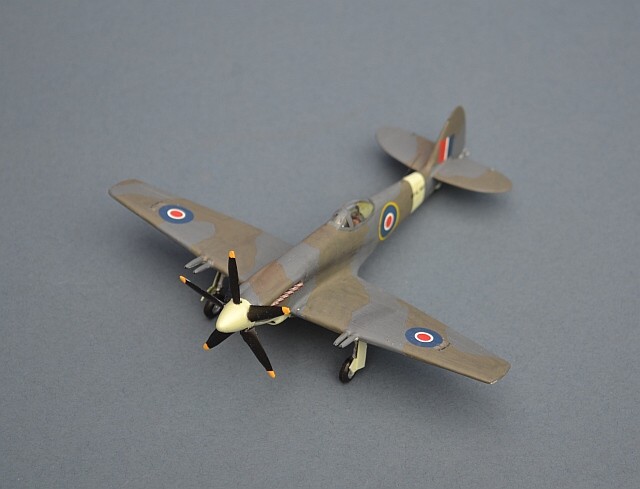
The Spiteful and Seafang were modestly successful and were certainly very fast, although the new wing showed some undesirable characteristics when approaching a stall. None of these were significant issues for such a radical design, but the end of the war, the emergence of jet technology, plus the success of the rival Hawker Fury/Sea Fury and Seafire 45/47 designs, meant that further development of the aircraft was halted after only a few had been built.

Italeri Spitfire Mk IX, with home made decals, hook, fuselage strengtheners, and single radiator
HUNTER’s Seafires conducted low level air defence of the Fleet as well as shore attacks in support of Allied Forces advancing through Burma


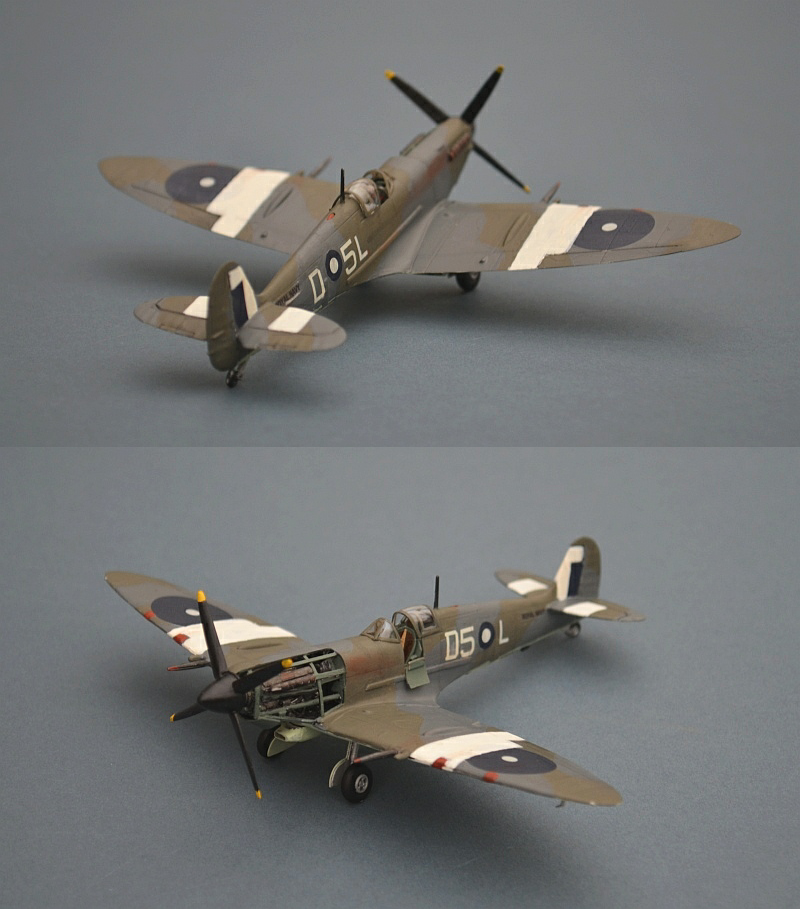
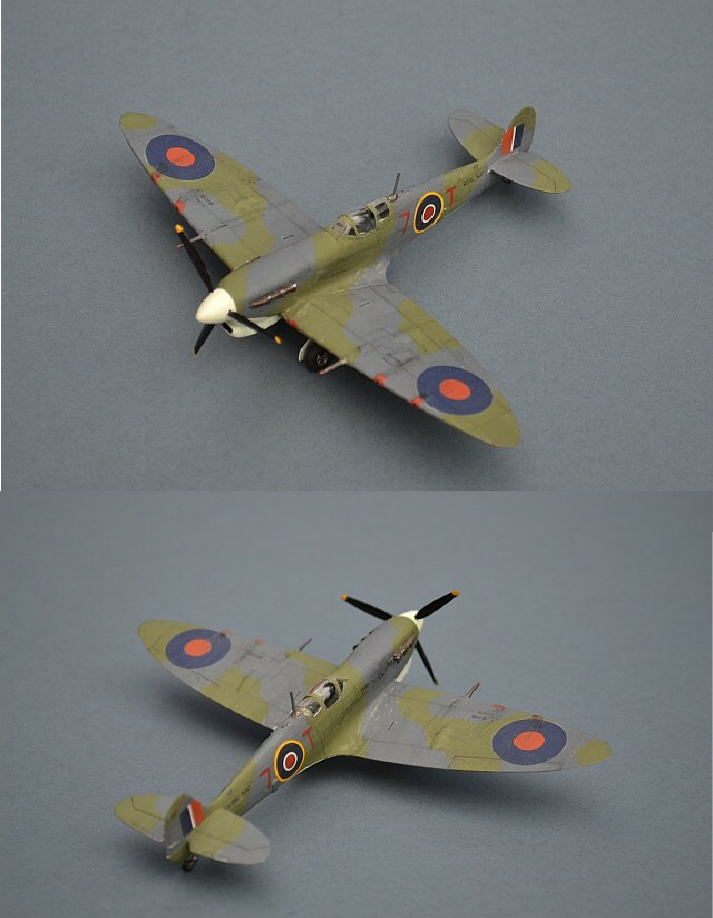
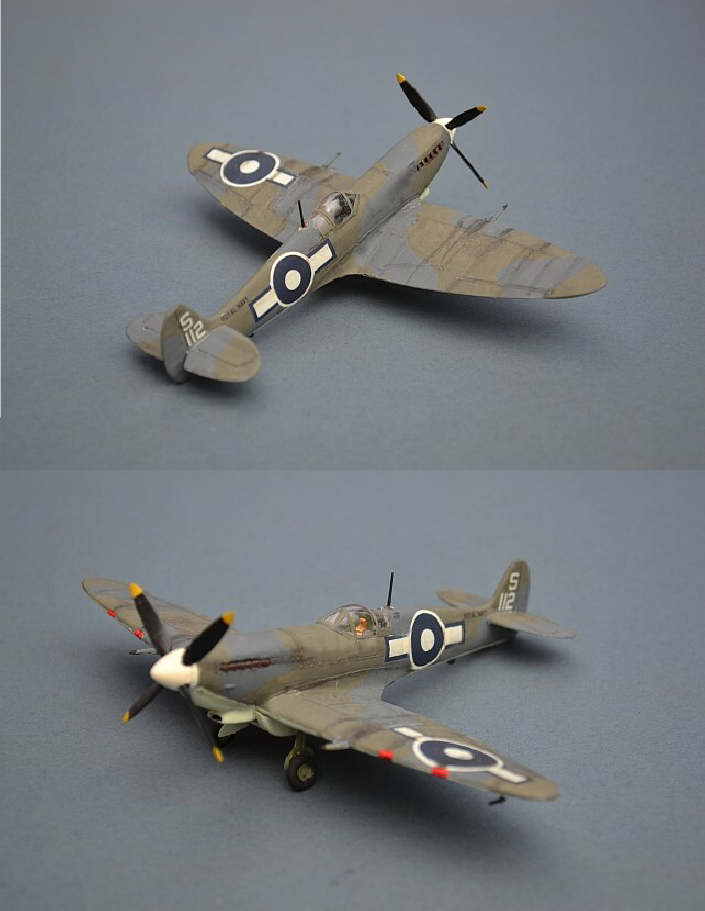
Seafire F46 -
The Seafire 46 was the naval equivalent of the Spitfire 22, but fitted with the a 5 blade airscrew (and a first trial of the Seafire with a contrarotating 6 blade version). Only 24 were built and like the 45, it did not have folding wings, so served mainly as a training and development aircraft.
Airfix Spitfire 22 with scratch conversions and Model Alliance decals
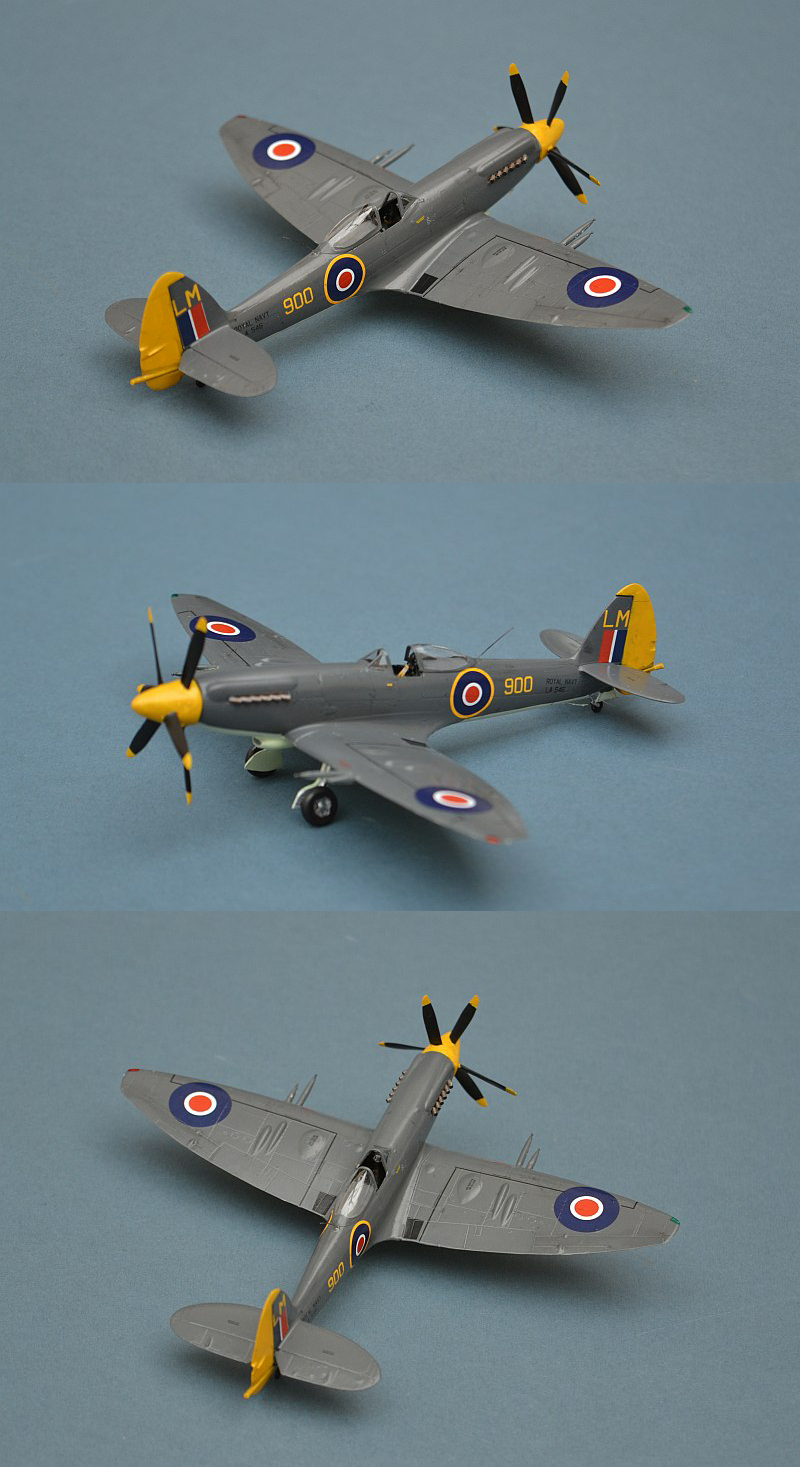

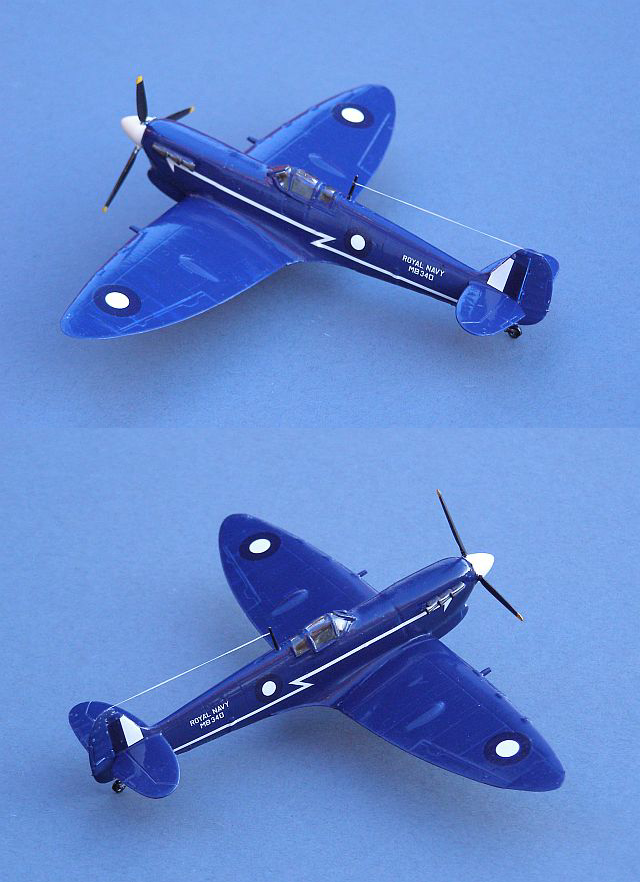

Airfix Spitfire IX (1960 mould) with strengtheners, hook, P.40 drop tank and scratch decals.
Arriving in the Pacific in June 1945, HMS IMPLACABLE was an improved version of the ILLUSTRIOUS Class, fitted with two hangars, one above the other to allow a far greater aircraft load to be carried, up to 81 aircraft with use of deck parking.
Unfortunately, the low deckhead height of these hangars precluded use of the high-
With their usefulness outwith their short range interceptor role severely limited by the Seafire’s short range, 880 managed to obtain a stock of surplus P40 teardrop shaped fuel tanks which they fitted to their Seafires. These were far more streamlined and reliable than the normal Seafire/Spitfire slipper tanks and are reputed to have improved the Seafire’s landing characteristics as well as significantly extending its range.
As a result, Seafires could be used on regular bombing escort and strafing “ramrod” missions over the Naval Base at Truk Atoll, the Japanese home islands (including over Tokyo), as well as protecting the fleet from increasingly desperate kamikaze attacks by the Japanese Naval Air Arm and Imperial Japanese Army.
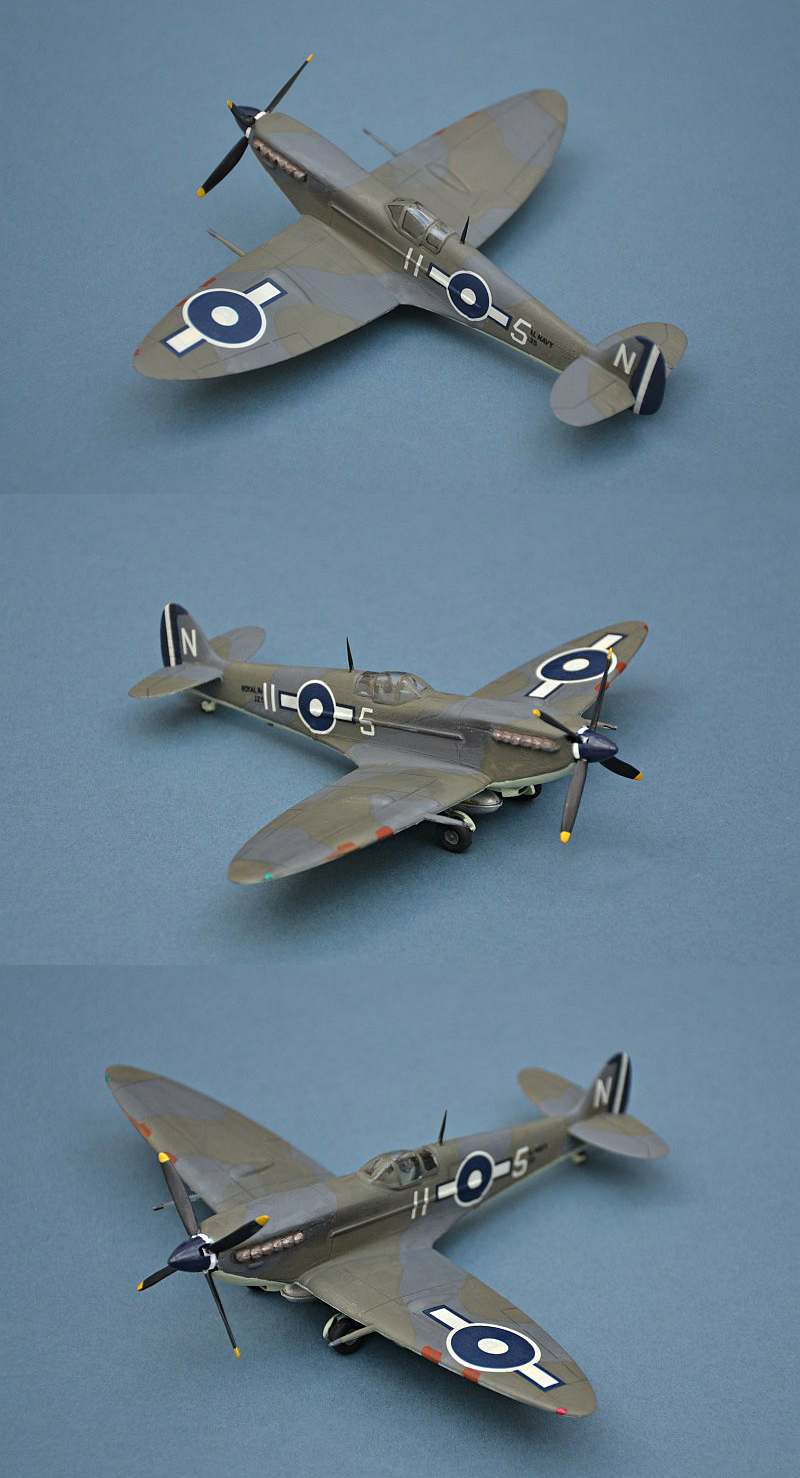
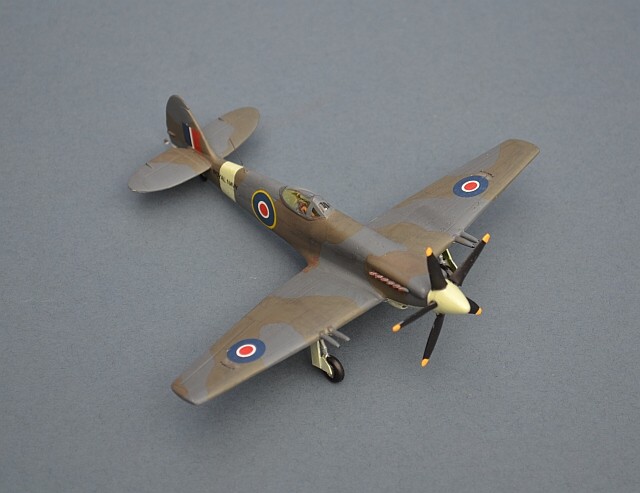
Nevertheless, the advanced laminar flow Spiteful wing did eventually see service, evolving into the awkward looking Supermarine Attacker, the Royal Navy's first operational jet fighter.



